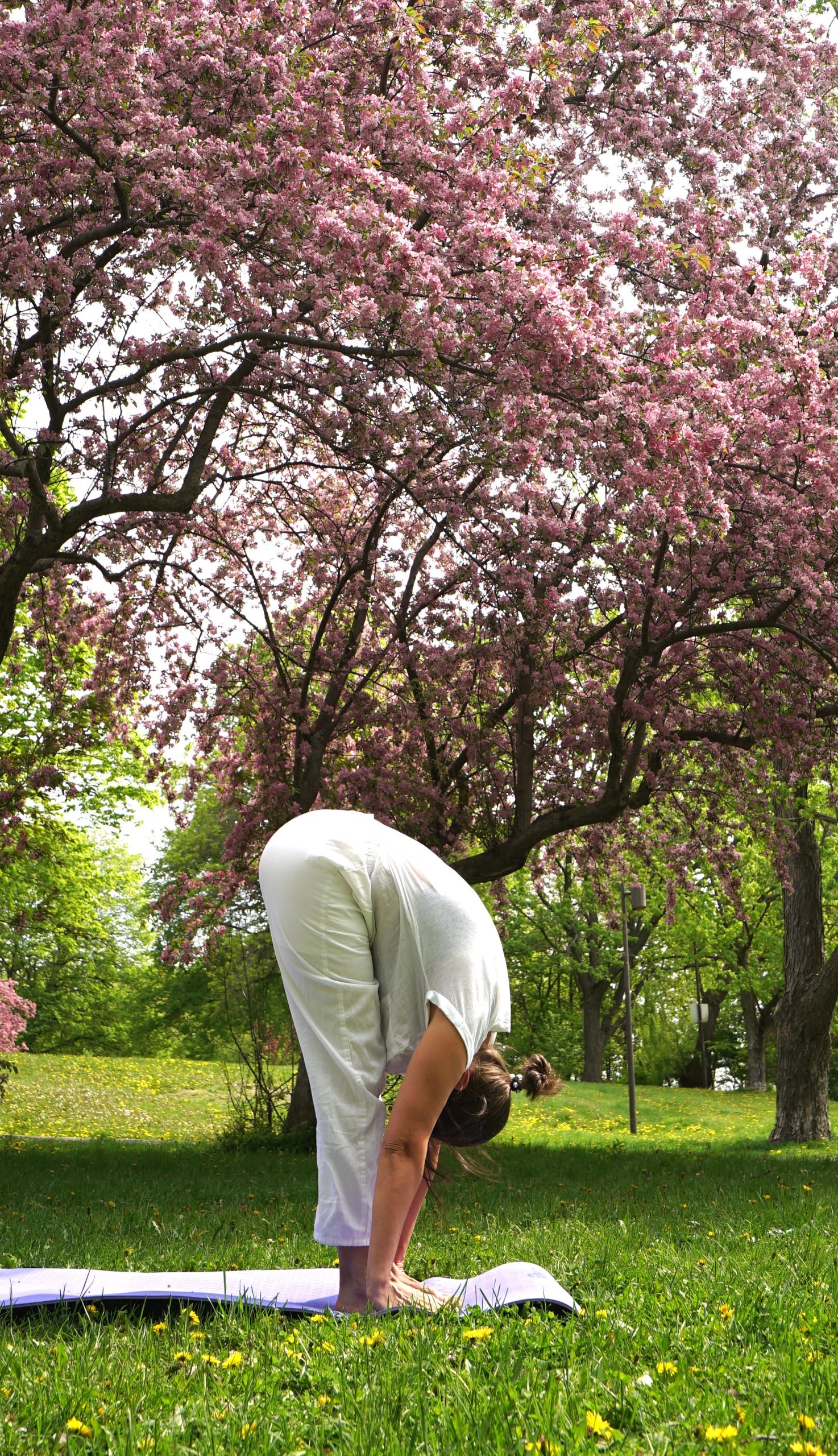FAQ

“By cultivating attitudes of friendliness toward the happy, compassion for the unhappy, delight in the virtuous, and disregard toward the wicked, the mind-stuff retains its undisturbed calmness. —Yoga Sutra I.33”

From contentment, incomparable happiness is obtained. —Yoga Sutra II.42
How can we help

Yoga Therapy & Ayurveda
Yoga therapy is a holistic approach to healing and wellness that combines the principles and practices of yoga with the insights of modern medicine and psychology.

Massage Therapy & Acupressure
Narayani Holistic BodyMind Therapeutic Massage seamlessly connects mind and body through touch, slow movements, and breathwork techniques.
Nadia Chouljenko
With a lifelong fascination for the healing power of human touch and energy, complemented by extensive clinical knowledge in mental health, I see the body as a resource for self-discovery and healing. Specializing in holistic massage therapy, with a focus on Jin Shin Do® Bodymind Acupressure® and Holistic BodyMind Therapeutic Massage, I help you to access your innate somatic wisdom by inducing deep relaxation and relieving aches and tensions. My intention is to empower your body to activate its natural healing powers so you can achieve the optimal state of wellbeing and harmony.

Workshops & Classes
Welcome to our comprehensive collection of Yoga Therapy Group Series, carefully curated to address various facets of your well-being.
Holistic Wellness
Yoga Therapy, Massage & Acupressure
Narayani offers a comprehensive range of services that encompass various modalities such as yoga therapy, breathwork, Jin Shin Do® BodyMind® Acupressure, massage therapy and Ayurveda lifestyle counseling.
We empower individuals to take an active role in their health journey, fostering a sense of ownership and self-empowerment.
We firmly believe in the body's innate ability to heal and re-balance itself, and our services are thoughtfully designed to stimulate and support this natural function. We are dedicated to providing a holistic approach to well-being, addressing the interconnectedness of the mind, body, and spirit.
Join us on this journey towards wellness.
Meet the Team
Lana Alsalem
My enduring passion for movement and wellness, combined with my education in yoga therapy, Ayurveda lifestyle, breathwork, and yoga, provides me with a unique perspective on how we navigate life’s imbalances in our body and mind. With over 1700 hours of extensive training, my commitment to your well-being is unwavering.
My intention is that everyone I encounter can experience a greater sense of well-being, particularly if we release the notion that health is determined solely by age or diagnosis, and instead focus on joy and overall wellness. Your body, your needs, your goals are at the heart of my approach.

More about Nadia
For nearly two decades, I led the nursing team in both the Psychiatric department and emergency care, gaining valuable experience in understanding the challenges of human well-being. During this time, I gained a deep appreciation for the value and limitations of traditional Psychiatry, prompting my exploration into the intricate connection between mind, emotions, and the physical body
Throughout my nursing career, I maintained my own balance through yoga, meditation, and breathing, cultivating a sense of serenity and compassion. Fascinated by the healing power of human touch and energy, I immersed myself in the study of various massage and somatic techniques.
In 2021, I made a pivotal decision to leave the hospital environment and fully dedicate myself to advancing my knowledge in the field. After successfully completing my diploma in Swedish massage in Montreal, I earned my credentials as a licensed massage therapist. My fervor for holistic and somatic approaches drove me to pursue further studies, leading me to Italy for specialized training in Jin Shin Do® Bodymind Acupressure®. I completed my search for knowledge at the Russian School of Vector Massage and Somatics, where I finally found the missing piece I had been looking for.
With more than 1200 hours invested in rigorous studies concentrating on massage therapy and bodymind work, I now fuse my profound expertise in Mental Health with therapeutic skills. This integration allows me to provide a holistic approach to integrative wellness. I am committed to bridging the gap between traditional and holistic approaches, offering a unique perspective that integrates both mind and body to enhance your overall well-being. My dedication is to truly grasp your goals, using both my theoretical knowledge and intuitive therapeutic abilities to facilitate your journey to self-healing. It is my sincere desire to guide you towards holistic well-being through a personalized and empathetic approach.
More about Lana
“From an early age, my commitment to self-healing and wellness endured, navigating through chronic back pain and a couple of sports injuries.
In 2002, a transformative yoga class with Sameera, a 75-year-old yoga teacher, ignited my journey towards becoming a wellness-focused yoga teacher. This experience profoundly transformed my overall well-being, shaping yoga into more than just physical exercise – it became the cornerstone of my physical, emotional, and spiritual health.
Motivated by this transformation, I transitioned from a successful 20-year career in software development and a PhD in software engineering to pursue a deeper calling beyond corporate success. Driven by my passion to guide others in healing and self-discovery through yoga, I earned certifications as a yoga therapist, Ayurveda lifestyle consultant, and breathwork instructor.”

“Inside each of us is the radiant light of Joy. It is the Divine spark, ignited at our birth. By individual realization of our connection to the Divine Source, we find our true inner joy and our light shines forth.” Jennie Lee
